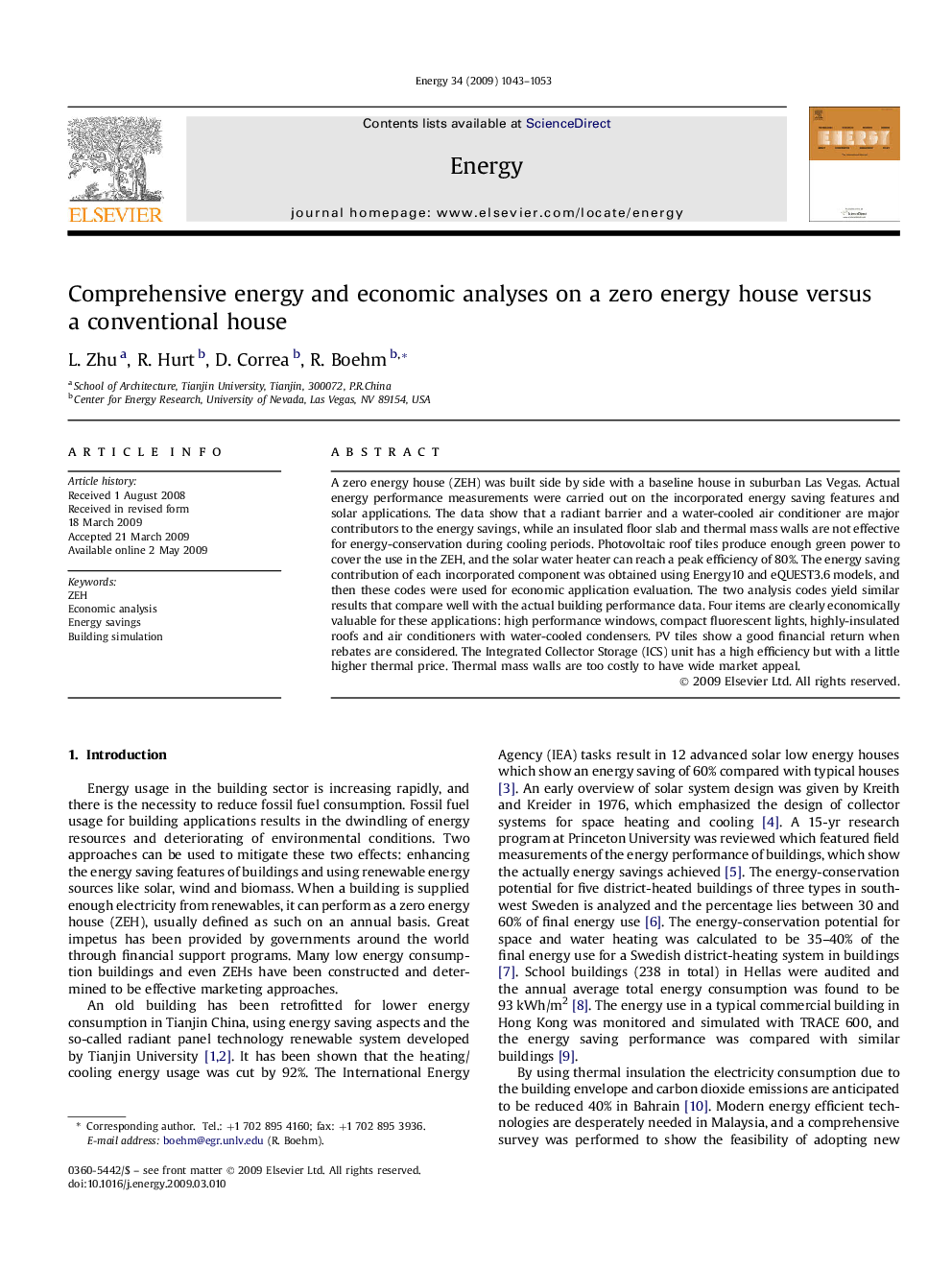| Article ID | Journal | Published Year | Pages | File Type |
|---|---|---|---|---|
| 1734414 | Energy | 2009 | 11 Pages |
Abstract
A zero energy house (ZEH) was built side by side with a baseline house in suburban Las Vegas. Actual energy performance measurements were carried out on the incorporated energy saving features and solar applications. The data show that a radiant barrier and a water-cooled air conditioner are major contributors to the energy savings, while an insulated floor slab and thermal mass walls are not effective for energy-conservation during cooling periods. Photovoltaic roof tiles produce enough green power to cover the use in the ZEH, and the solar water heater can reach a peak efficiency of 80%. The energy saving contribution of each incorporated component was obtained using Energy10 and eQUEST3.6 models, and then these codes were used for economic application evaluation. The two analysis codes yield similar results that compare well with the actual building performance data. Four items are clearly economically valuable for these applications: high performance windows, compact fluorescent lights, highly-insulated roofs and air conditioners with water-cooled condensers. PV tiles show a good financial return when rebates are considered. The Integrated Collector Storage (ICS) unit has a high efficiency but with a little higher thermal price. Thermal mass walls are too costly to have wide market appeal.
Related Topics
Physical Sciences and Engineering
Energy
Energy (General)
Authors
L. Zhu, R. Hurt, D. Correa, R. Boehm,
